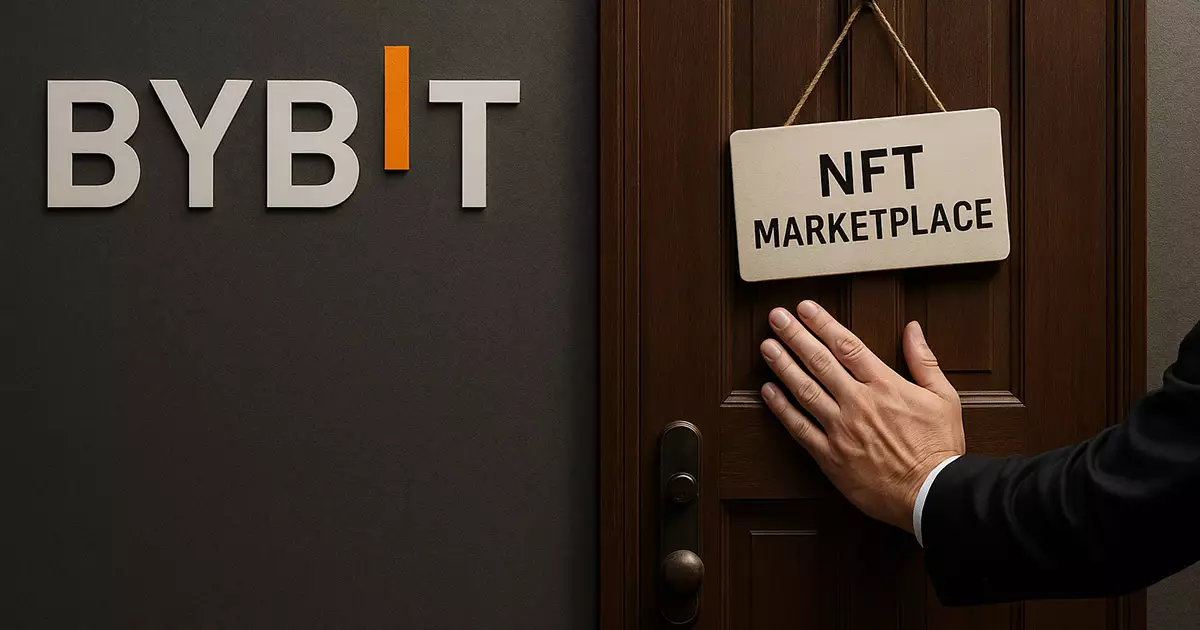Bybit’s recent announcement to shutter its NFT Marketplace, Inscription Marketplace, and Initial DEX Offering (IDO) product pages isn’t merely a corporate realignment—it’s a glaring signal of profound instability within the entire NFT sector. Fluctuating enthusiasm for digital collectibles has led to a catastrophic 95% drop in trading volumes since the market peak in 2021. This isn’t just an isolated setback; rather, it reflects a wider collapse of what many once believed would revolutionize the concept of ownership. The stark reality is that the initial exuberance surrounding NFTs has withered as the novelty fades and as market volatility skyrockets.
Unearthing the Chaos: The Statistics Don’t Lie
Dive into the data, and the narrative becomes even more troubling. According to blockchain analytics firm DappRadar, the number of active wallets has plummeted to an astonishingly low figure—less than 20,000 in 2025—down from over half a million at the height of NFT madness. This stark transformation underscores how significantly interest has eroded. With total NFT sales dipping to $1.5 billion during the first quarter, a staggering 63% decline year-over-year, one can’t help but wonder whether the NFT bubble has burst, leaving behind scattered remnants of what once seemed so promising.
It’s disheartening to announce that even industry darlings like the Bored Ape Yacht Club have seen their market positions decimated. Some niche collections like Pudgy Penguins and Doodles may have experienced minor rebounds, yet those instances are overshadowed by the overwhelming decline surrounding the mainstream names.
Security Concerns: A Bitter Pill to Swallow
Bybit’s closure also highlights another critical aspect of the failure—security. Following a massive breach that saw the theft of $1.4 billion in digital assets by hackers allegedly from North Korea, mistrust in platforms handling NFTs has escalated. If users can’t feel secure with their investments, even the most fervent supporters will think twice before participating in a marketplace riddled with risk. Bybit’s choice to pivot away from NFTs may be a reaction to not just a decline in interest but an urgent response to these escalating security concerns.
Institutional Retreat: A Sign of Deeper Issues
The domino effect isn’t limited to Bybit. Kraken’s shutdown of its NFT marketplace and LG Electronics’ decision to dissolve LG Art Lab highlight a growing exodus from what many believed would become a stable sector. These pivotal companies were once weighted with expectations to usher in a new era of digital assets, yet have instead opted for a retreat, further punctuating the fragility of the market.
The perception of NFTs as the future of digital ownership is waning fast. While some pockets of activity remain, the overwhelming sentiment is one of despair and resignation among investors and creators alike. It raises a pressing question: are NFTs merely a phase of digital experimentation that has led us to an uncomfortable realization? Perhaps the industry needs to recalibrate its expectations and focus on sustainability rather than chasing hype-driven promises.


Leave a Reply